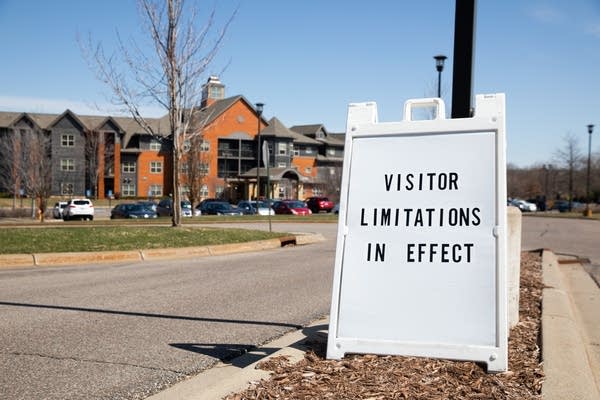Nursing homes on the front line of limiting coronavirus spread among Minnesotans

Go Deeper.
Create an account or log in to save stories.
Like this?
Thanks for liking this story! We have added it to a list of your favorite stories.
When Minnesota officials confirmed the early deaths from respiratory illness caused by the coronavirus in late March, they found most were in patients who lived in long-term care facilities, and all of the initial four were in their 80s. Since then, nursing home operators have tried to limit spread and balance the needs of families — in an ever evolving situation.
More than half of the Minnesotans who died from the respiratory illness lived in group care facilities. As of Monday, there are 90 residents and 36 staff in long-term care facilities with confirmed COVID-19 cases. Seventeen people in long-term care settings have died from COVID-19.
The most recent cases are spread across 57 long-term care facilities in the state. One facility has a total of 12 COVID-19 cases.
“This congregate care setting, this is really our greatest concern and our focus right now,” said Kris Ehresmann, who works on infectious disease for the Minnesota Department of Health. Her department over the weekend began posting on its website the names of long-term care facilities which have confirmed COVID-19 in residents or staff.
Turn Up Your Support
MPR News helps you turn down the noise and build shared understanding. Turn up your support for this public resource and keep trusted journalism accessible to all.
To limit spread of the coronavirus, skilled nursing facilities are required to follow state and federal guidelines, such as putting restrictions on visitors and screening staff daily, and may be cited if they do not. But restrictions are tougher to put into place in senior independent living facilities, where residents have more power to make decisions.
For elder care facilities, there are a lot of moving parts in dealing with COVID-19, balancing restrictive public health measures with resident rights and staff health.
“We want people to realize that the restriction guidance that we’ve put in place is to protect the residents as best we can because what we’re seeing is even with that in place, we can have situations in which there’s transmission,” Ehresmann said. “And I’m sure that if we hadn’t had those things in place, we would’ve had transmission much earlier.”
At the office of the State Ombudsman for Long-Term Care, the number of calls has gone from about 40 to well over 100 per day.
Cheryl Hennen, the ombudsman, is fielding calls from residents who feel they are too constricted, and from families worried that facilities aren’t doing enough to protect their loved ones. She said she’s gotten a lot of calls from families who because they can’t come visit want to put cameras in their loved one’s room to monitor the care they are receiving — which is allowed under state law with a resident’s permission, when possible.
In some rare cases, Hennen said, residences have become so strict that a family can’t see their loved one at the end of life.
“Family members have requested to at least view their loved ones body before possible cremation. And this has been denied,” she said.
She emphasized that people still have rights in this situation and while she understands there is a balance that needs to be struck between public health and resident rights, she wants people to know they can call her office. For the most part, Hennen said she’s been able to strike agreements between home operators and residents and their families.
In late March, Presbyterian Homes learned firsthand about the threat the coronavirus poses to elder care facilities when two residents of Johanna Shores’ skilled nursing home were confirmed to have COVID-19.
“We then sent our, so to speak, SWAT team in, and they followed all the steps that need to be taken, which is quite a bit, a lot of work,” said Johannes Koomen, the vice president of clinical services for Presbyterian Homes, which runs Johanna Shores.
After the initial tests, Johanna Shores had to send nine staff members home who’d had direct contact with those confirmed residents. Those staff members were told to quarantine for 14 days. The facility isolated the floor where the cases were identified and isolated the residents who tested positive. They assigned staff to stay on their floor, and further, had staff that work only with the residents with confirmed cases.
“We haven’t had any other cases at Johanna Shores since the first several residents were diagnosed, which is quite remarkable,” Koomen said. “That does not mean we won’t have any, but at this point, which is a little while now, it’s over a week or more, so that’s good.”
Both Presbyterian Homes and Ebenezer, the state’s largest senior living operator, are looking into the possibility of having a care facility that is specifically geared toward COVID-19 residents.
“We have had some conversations about the feasibility of creating some locations where we can cohort individuals,” said Jon Lundberg, the CEO of Ebenezer.



